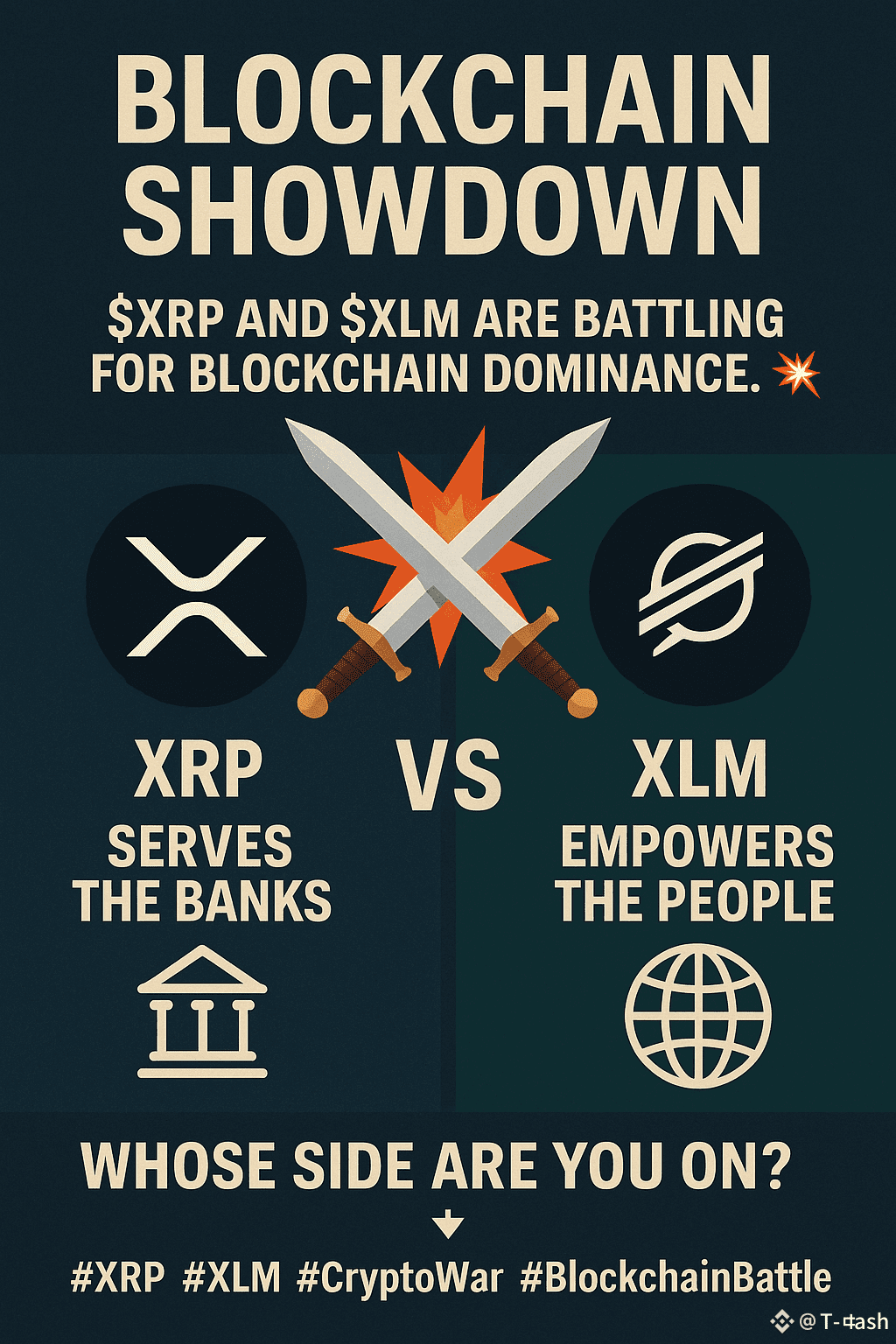
The crypto battlefield is heating up — and $XRP and $XLM are leading the charge in the race for blockchain dominance.
Both tokens are on a mission to reshape global payments, but they’re using very different strategies to get there.
🏛️ $XRP: The Banker’s Blockchain
$XRP , developed by Ripple Labs, is tailored for institutional use. It’s designed to work seamlessly with central banks, financial institutions, and regulatory frameworks. With blazing-fast transaction speeds, low fees, and enterprise-grade scalability, XRP aims to become the bridge currency for global liquidity.
Partnered with major banks and payment providers
Focused on cross-border settlements
Built for regulated financial ecosystems
In short: XRP is the blockchain built for the banking elite.
🌍 $XLM: The People’s Coin
On the other side of the spectrum is XLM, or Stellar Lumens, a project born from the idea of financial inclusion. Created by Jed McCaleb (also a Ripple co-founder), XLM aims to empower the unbanked by providing accessible and decentralized financial tools across the globe.
Open-source and community-driven
Prioritizes low-cost, peer-to-peer payments
Designed to support grassroots adoption
In short: XLM is the blockchain for the people, not the banks.
⚔️ Battle for Blockchain Dominance
This is not just a difference in tech — it’s a clash of ideologies.
One token works within the system to modernize it.
The other aims to rebuild the system from the outside.
As governments, institutions, and individuals move closer to adopting crypto at scale, the question becomes:
Which blockchain will lead the financial future?
👇 Whose Side Are You On?
Are you standing with XRP, the institutional powerhouse?
Or are you backing XLM, the decentralized champion?
Let the world know. Choose your side. 🔥
🔗 Trending Hashtags
Disclaimer: This article includes opinions and general information, not financial advice. Always do your own research before making investment decisions.


